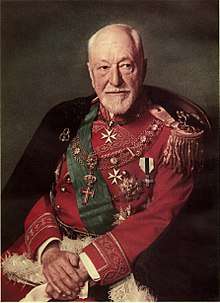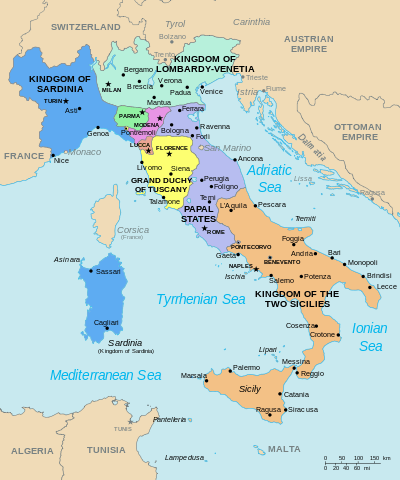Supreme Order of Christ
| Supreme Order of Christ Ordine Supremo del Cristo | |
|---|---|
.jpg) Star and badge of the Order of Christ | |
| Awarded by the Pope | |
| Type | Single grade order of merit |
| Established | 1319 |
| Eligibility | Catholic heads of state |
| Awarded for | Services to the Church |
| Status | Dormant |
| Grand Master | Pope Francis |
| Grades | Knight |
| Precedence | |
| Next (higher) | None (highest); clerics, such as theologians, philosophers, or diplomats, can be named Cardinals or Bishops for meritorious services to the Pope and the Holy See, without being given an actual office |
| Next (lower) | Order of the Golden Spur |
|
Ribbon bars of the order | |
The Supreme Order of Christ (Italian: Ordine Supremo del Cristo) is the highest order of chivalry awarded by the Pope. According to some scholars it owes its origin to the same Order of Christ of the Knights Templar, from which came the Order of Christ that was awarded by the Kings of Portugal and the Emperors of Brazil. The Portuguese order had originally both a secular and religious component; by the 18th century, the religious component had died out.
Dispute over the Order
The papacy insisted that the right of the Portuguese monarchs to award the honour had been granted by a pope in the Papal Bull Ad ea ex quibus issued in Avignon on 14/15 March 1319. While the Bull in itself does not explicitly grant to the Pope the right to issue the Order, successive popes since Pope John XXII have done so. For many years the Portuguese monarchy disputed the right of the papacy to award the Order, and in one famous case arrested someone for wearing the papal Order. The position of the Crown of Portugal was, that the only legitimate fons honorum was the Crown.[1] The position of the Catholic Church is that the pope is the head of every religious order and may appoint, at his discretion without the permission of its Superior General, any individual he deems worthy.[2]
Made senior papal Order in 1905

As part of the general re-organisation of papal honours in 1905 by Pope Pius X, the papal Order of Christ was made the most senior papal honour. It was traditionally awarded to senior Catholic heads of state, notably Éamon de Valera as President of Ireland by Pope John XXIII.
Restricted by Pope Paul VI in 1966
Its usage was restricted by Pope Paul VI in his 15 April 1966 Papal Bull Equestres Ordinis, to Catholic heads of state to whom it might be given only to commemorate very special occasions at which the Pope himself was present. It has rarely been awarded since; the last award was made by Pope John Paul II in 1987 to Frà Angelo de Mojana, 77th Prince and Grand Master of the Sovereign Military Order of Malta. With the death of King Baudouin of the Belgians in 1993 there are no living members of the Order of Christ.
In ecclesiastical heraldry, individuals awarded this Order may depict a Collar completely encircling the shield on their coat of arms.[3]
See also
References
- ↑ José Vicente de Bragança, The Military Order of Christ and the Papal Croce di Cristo
- ↑ MacErlean, Andrew Alphonsus (1912). The Catholic Encyclopedia: An International Work of Reference on the Constitution, Doctrine, Discipline, and History of the Catholic Church, Volume 4. Robert Appleton Co. pp. 667–668.
- ↑ Noonan, Jr., James-Charles (1996). The Church Visible: The Ceremonial Life and Protocol of the Roman Catholic Church. Viking. p. 196. ISBN 0-670-86745-4.
External links
| Wikisource has original text related to this article: |

